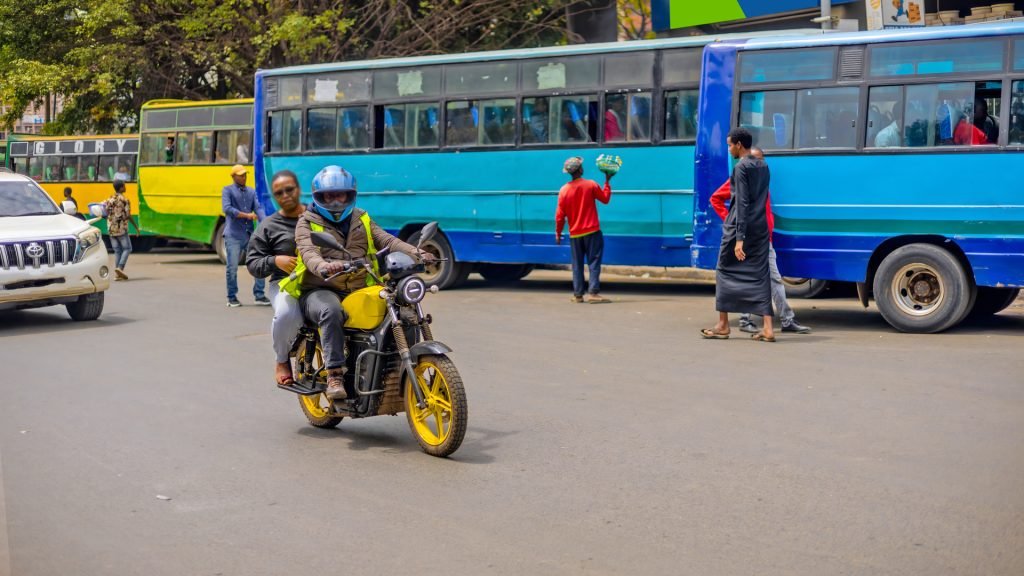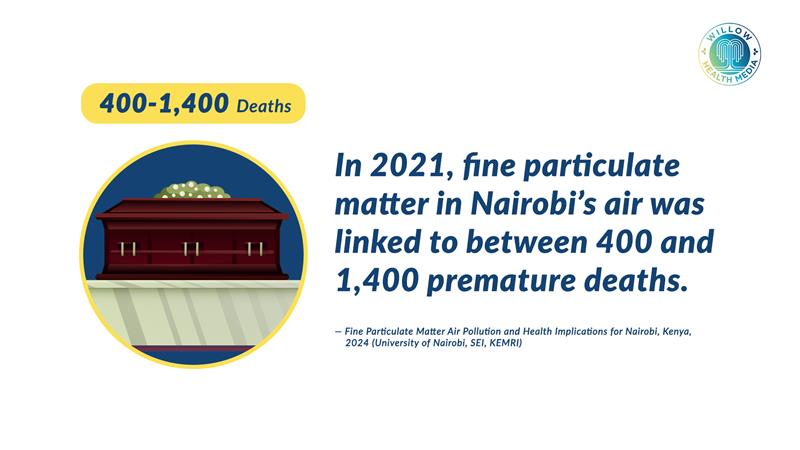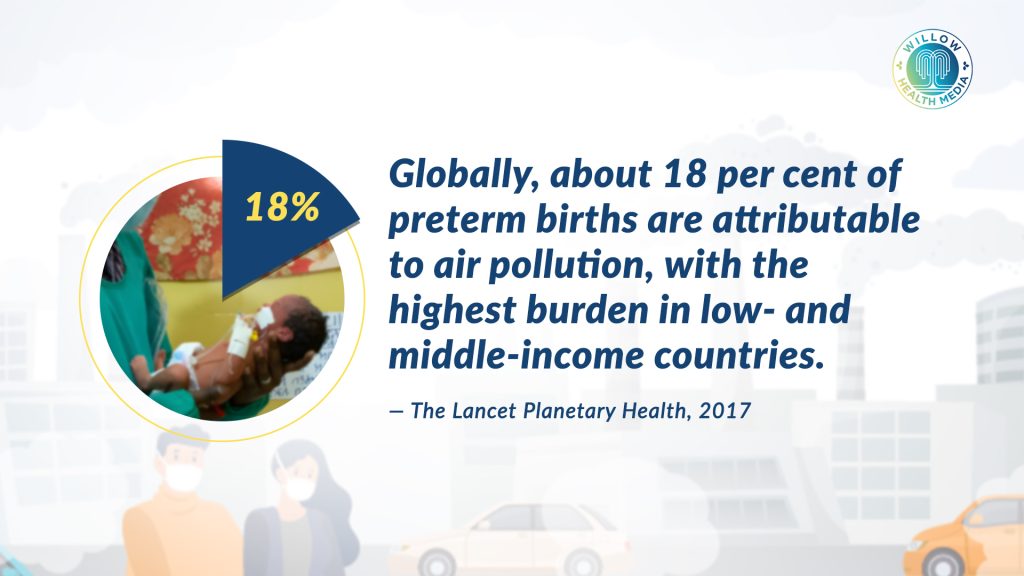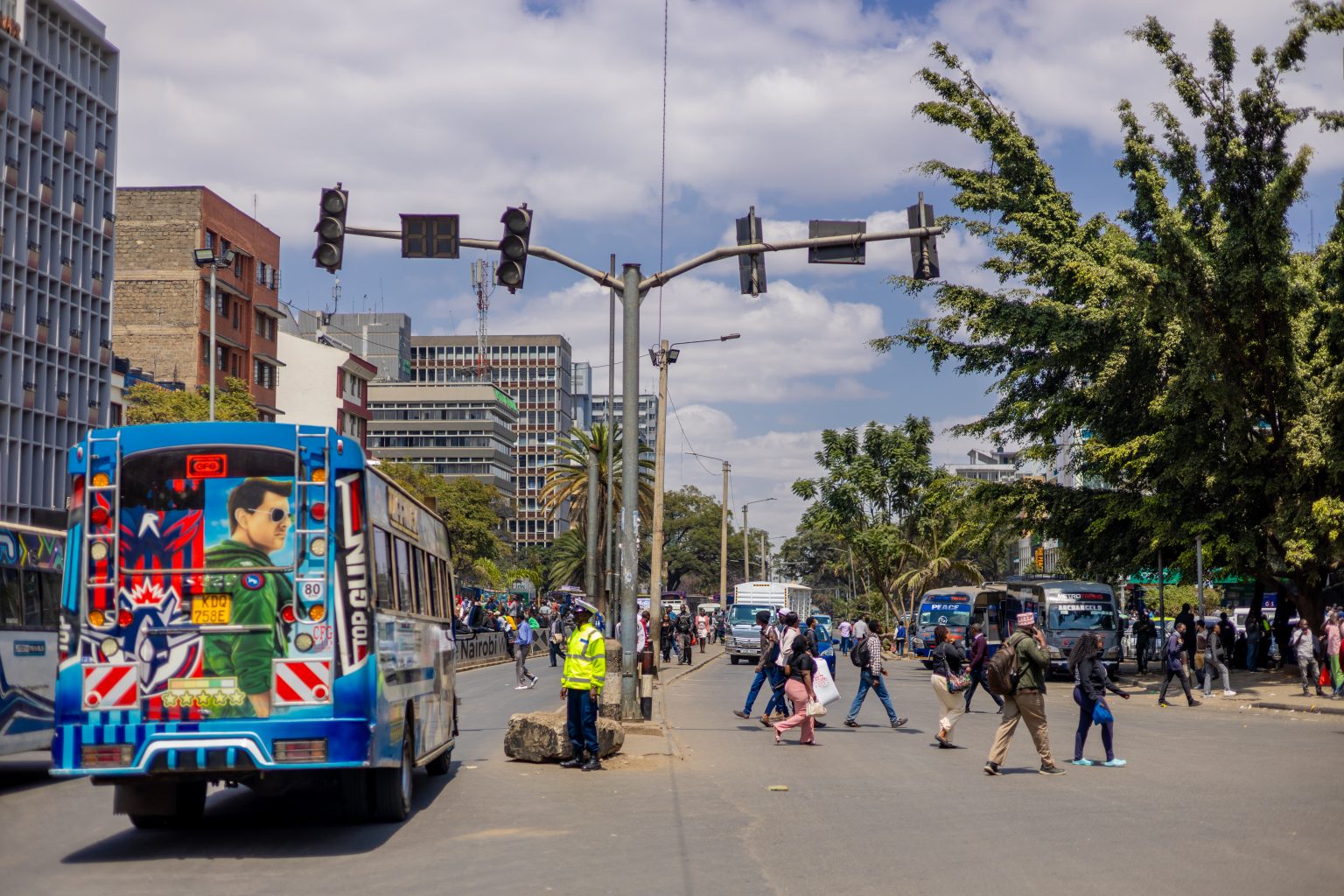While many of Nairobi’s commuters are impressed by the comfort and innovation of electric bikes and buses, the invisible public health implications are profound.
For more than a decade, Naomi Wanjiku, a hawker in Nairobi’s Central Business District (CBD), has weaved through the city’s traffic, selling groundnuts to pedestrians, passengers and traders going about their daily runs.
Over the years, she says she has noticed a dramatic change in the quality of air, from clean and fresh to a daily smog covering the city’s skyline, arising from vehicle and motorcycle exhaust, smoke from burning garbage, and industrial fumes.

At times, the air in parts of the city is so congested “I have to cover my mouth and nostrils with a scarf to avoid coughing,” says Wanjiku whose experience is not a delusion: The daily hum of petrol and diesel engines, belching exhaust into an atmosphere already thick with pollutants, is more than a mere inconvenience; it’s a public health crisis.
A 2024 paper titled “Fine particulate matter air pollution and health implications for Nairobi, Kenya,” conducted over three years, shows that the mean annual concentration was about 18.4 micrograms per cubic metre of air, estimated to lead to between 400 and 1,400 premature deaths in the city’s population in 2021.
Particulate matter is a mixture of tiny solid particles and liquid droplets suspended in the air, which, when inhaled, can enter the lungs or bloodstream. The particles originate from vehicle fumes, especially diesel vehicles, the burning of fuels, and industrial emissions.
The study shows that particulate matter contributed between five and eight per cent of the 17,432 adult deaths, excluding accidents, when referenced to the World Health Organization (WHO) recommended 2021 air quality guideline for annual thresholds of 5 micrograms per cubic metre of air.

The quieter rides and absence of exhaust fumes in residential estates have already begun to reshape commuter experiences
Like particulate matter, Nitrogen dioxide is produced from burning fossil fuels from cars, trucks, buses, power plants, and industries. The health implications of such chronic exposure are well documented, ranging from increased cardiovascular morbidity to respiratory illness and premature death.
Nevertheless, a new sound is slowly emerging in the city: the quiet whir of electric bikes and buses. Supported by green-energy start-ups, public-private partnerships, and a modest but growing charging infrastructure, electric mobility is replacing traditional internal combustion vehicles on certain routes.
While the skyline remains hazy and traffic is still dominated by fossil fuel-powered transport, people in Nairobi are now expressing cautious optimism that within the next decade, the city could experience better air quality, thanks to green transport.
The quieter rides and absence of exhaust fumes in residential estates have already begun to reshape commuter experiences.

Collins Machio, a freelance photographer who spends much of his day shuttling between the Central Business District (CBD) and Upper Hill, notes the stark difference in his daily travel.
“It feels like Nairobi is finally catching up with other modern cities,” he remarks, camera strap across his chest.
“The electric bus ride is quieter, cleaner, and it feels futuristic. Same fare as before, but the comfort is unmatched.”
For e-mobility operators, the electric shift has brought unexpected operational benefits
For him, the shift is not only a technological innovation but also a tangible improvement in his working conditions, where prolonged exposure to noise and exhaust had become an occupational hazard.
Similarly, for Wanjiku, electric buses have brought practical relief. “I’m just grateful that the fare is still the same and hasn’t gone up,” she says, weaving through the crowd with her tray of groundnuts. “The economy is tough, so if the electric bus companies had increased the fare because the buses are new, people would have suffered.”
She points to a sleek, green-and-white electric bus pulling into the Kencom terminus. “It is more spacious, the seats are bigger, you can breathe freely inside, and when they come to the estates, it’s peaceful. No smoke, no shouting.”

The shift is equally visible on two wheels. Mwarishi Rodgers Moffat, a delivery rider in the Westlands area, initially tried an e-bike because of its growing reputation for affordability. “People said they were cheaper to maintain, and the power costs less than petrol,” he explains, plugging in at a charging station. “I had a petrol bike before, but I was just testing the waters. I’ve found that I only need to charge the e-bike once after a whole day’s work, and charging ports are in many places across the city.”
Yet, he acknowledges the limitations. “The only issue is you can’t really take the e-bikes upcountry, as there are no charging stations there. But here in Nairobi, it works. For my health, I can’t say I’ve noticed changes, but for my pocket, it’s a good choice.”
Chronic exposure to air pollutants increases the risk of stroke, ischemic heart disease, and lung cancer
For e-mobility operators, the electric shift has brought unexpected operational benefits. Chrispers Mwangangi, the Operations Manager at Citi Hoppa bus company, has observed a marked preference among commuters for the newly acquired electric buses.
“At first I thought it was because they’re new, because new brooms sweep clean,” he laughs. “But it’s more than that. They are more spacious, smoother, and quieter. Even the bus crews fight to get assigned to them, leaving the old buses to others. They are more efficient, less noisy, and cleaner. Once they charge overnight, they’re good for the whole day.”

Like Moffat, Mwangangi notes the operational constraint of limited intercity charging infrastructure but describes city operations as “economically and logistically sound.”
While many of Nairobi’s early adopters are motivated by comfort, economics, and innovation, the public health implications are profound.
WHO identifies fine particulate matter and nitrogen dioxide as two of the most dangerous urban pollutants due to their capacity to penetrate deep into the lungs and enter the bloodstream, triggering inflammation, oxidative stress, and systemic effects. Chronic exposure increases the risk of stroke, ischemic heart disease, chronic obstructive pulmonary disease, and lung cancer.
Children are uniquely vulnerable because of their developing respiratory systems
Nairobi’s high roadside concentrations mean that even short daily commutes contribute significantly to cumulative exposure, particularly for children, street vendors, and outdoor workers like Wanjiku and Machio.
Children are uniquely vulnerable because of their developing respiratory systems and higher minute ventilation rates relative to their body size. A 2015 study titled Association of improved air quality with lung development in children linked chronic exposure to vehicle-derived pollutants with reduced lung growth, increased asthma prevalence, and impaired cognitive development.
For pregnant women, the risks are even more urgent. Fine particulate matter can cross the placental barrier, causing placental inflammation, reducing nutrient and oxygen transfer, and increasing the risk of adverse birth outcomes. The Lancet Planetary Health estimates that 18 per cent of global preterm births are attributable to air pollution, with the burden highest in low- and middle-income countries.
For Nairobi, aligning with WHO’s clean air standards could avert thousands of preterm births annually, according to the Clean Air Fund. Such a reduction would translate to fewer neonatal intensive care admissions, lower infant mortality, and better lifelong health trajectories.

Lower exposure during pregnancy is also associated with reduced incidence of low birth weight, a risk factor for chronic diseases in adulthood, including hypertension and diabetes. In economic terms, healthier pregnancies and births reduce healthcare costs, improve productivity, and decrease the long-term burden on health systems.
The adoption of electric vehicles offers a practical pathway to reducing exposure to toxic air pollutants
The full health dividend of electric mobility will only be realised when the transition becomes dominant. Currently, Nairobi’s roads remain a mix of electric and fossil fuel vehicles, and pollutant levels continue to exceed safe thresholds.
Yet, each electric vehicle deployed represents a marginal decrease in roadside emissions and an incremental improvement in urban air quality. These early gains, although modest, can have measurable public health impacts. Studies in European cities have shown that even a 10 per cent reduction in Nitrogen dioxide levels correlates with significant decreases in asthma hospitalisations among children.

For now, the city is in a transitional phase, with part technological innovation, part behavioural shift. The narratives from commuters, vendors, riders, and fleet managers reveal a common thread: while health benefits are rarely the primary motivation for embracing electric mobility, they are an inevitable consequence of cleaner transport.
Whether it is Machio’s appreciation of a quieter ride, Wanjiku’s relief at unchanged fares, Moffat’s satisfaction with lower running costs, or Mwangangi’s operational efficiency gains, these early adopters are contributing to a city-wide shift that aligns with global public health priorities.
In a metropolis where traffic congestion is unavoidable, the adoption of electric vehicles offers a practical pathway to reducing exposure to toxic air pollutants. WHO’s guidance is unequivocal: cleaner air saves lives, improves quality of life, and supports healthier development in children.
Nairobi’s challenge will be to maintain momentum, expand charging infrastructure beyond the city centre, and ensure that policy frameworks incentivise a full transition.
The writer was a student at the KEMRI Graduate School Health Journalism & Public Health Communication Course. The story is a collaboration of KEMRI Graduate School, University of Liverpool and Willow Health Media.





















